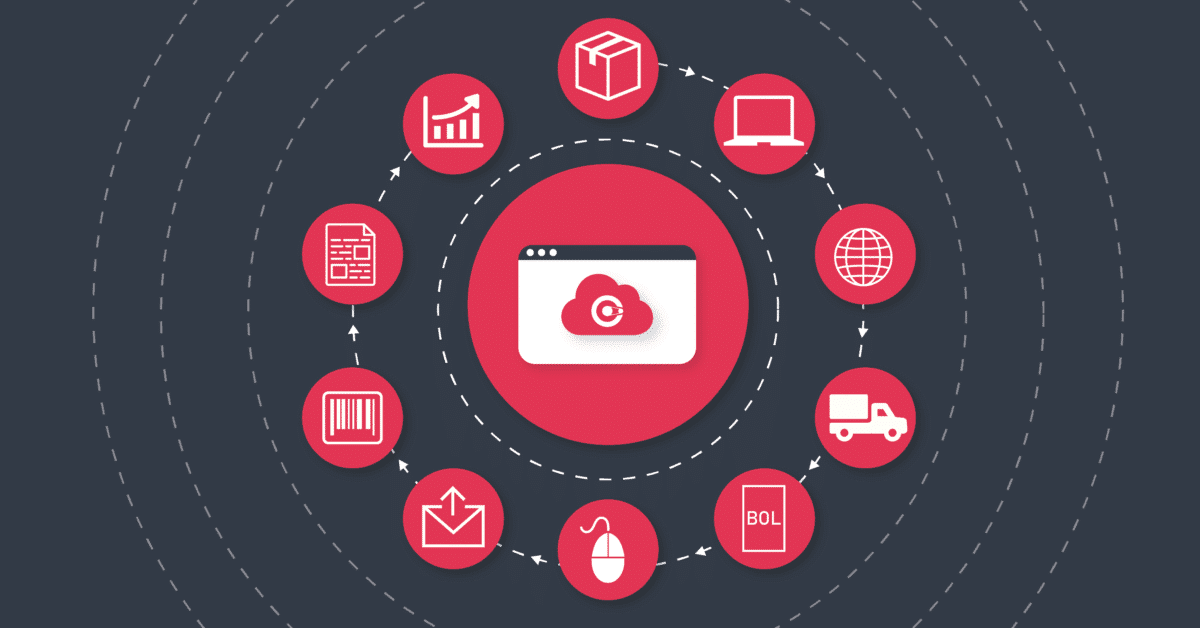
As an integration platform Cyclr is categorised under the iPaaS, Integration Platform as a Service, breed of SaaS. As a result, we thought we’d take a look at what makes an iPaaS application and find out where the industry was born from.
What does iPaaS stand for?
iPaaS stands for Integration Platform-as-a-Service.
What do iPaaS solutions do?
iPaaS solutions came into place to provide tools to aid in the creation and maintenance of integrations. They give users ready-made tools and elements to construct their bridge between systems. This also allows for the updating of API definitions in bulk. As a result, saving support time and taking it away from necessarily being a developer-only task.
As the iPaaS solution is creating the link between systems, sitting between them, it is also the perfect place to run automation and logic. This in turn provides users with more than just simple updates from one platform to another.
Before iPaaS, the only way to create a link between systems would be through having a bridge directly coded between them. These would be bespoke for companies, largely being written from the ground up; quite a developer-intensive process.
This means that each bridge between systems that have been created would also have to be individually maintained. Therefore, when a change is made to one of the APIs being used developer support would be required.
Where did it come from?
The rise of SaaS platforms and the proliferation of APIs allowed for a wider range of integrations to be created. However, with all of the different flavours of APIs being used, there is no natural language for one API to instantly be able to talk to another.
iPaaS solutions step in by creating wrappers around APIs and translating them into a common language. This allows data to be requested, manipulated and transferred. As a result, it is achieved without having to add a novel code every time you want to create an integration.
What are the alternatives?
Integrations can be coded using APIs and/or direct database access. They must handle user authentication, so users only have access to data within their permission scope. These integrations have to ensure that the API versions being used are kept up to date. This is done so methods are not depreciated.
There are also iSaaS and embedded iPaaS solutions.
What is iSaaS?
iSaaS solutions are open to citizen integrators to create and set up their own integrations. These are typically similar in scope but lack the logic and automation abilities of a full iPaaS solution. They also provide a user-friendly interface.
What is the difference between iPaaS and iSaaS?
A typical iSaaS user would be a small business owner or citizen integrator. They probably want to automate some of their tasks. Compared to an iPaaS user creating integrations that can be used and set up by others, be they, users or employees.
What is Embedded iPaaS?
Embedded iPaaS solutions allow SaaS vendors to create, manage and deploy self-service integrations direction from their own platform. Giving you the power of a full iPaaS system and the flexibility of a white-labelled solution, embedded iPaaS allows SaaS vendors to rapidly expand their integration offerings. It can do this without adding to the developer backlog by resolving key integration sticking points such as:
- API versioning and updating
- Individual integration maintenance
- Integration being a developer-only task
- Handling and maintaining multiple API and authentication types
What are its benefits?
iPaaS solutions give you a range of tools to speed up the creation of integration and increase their rigidity.
These toolsets do more than just send data from one location to another. You can create complex, repeatable functionality that will prevent to accumulation of data silos.
Tools, like Cyclr’s visual integration workflow builder, ensure that the task of creating an integration is no longer solely a developer’s responsibility. Tools can be used by people who have a sufficient understanding of the data and integration use case without programming knowledge. This frees up developer resources to work on core product offerings.
Who uses iPaaS solutions?
- SaaS Applications – Embedded iPaaS solutions provide an interface to create integrations and automation workflows that can be deployed within their application. The interface allows for a wider range of team members to create integrations, allowing developers to focus on the product.
- System Integrators – Teams of people who specialise in creating links and automation between systems for their client’s companies. As businesses move to use a wider range of SaaS applications to run their operations on, an iPaaS solution allows them to be agile in creating integrations with new systems, without having the learn their architecture inside out.
- Enterprise Companies – Companies of this size will likely run their businesses on a vast array of systems. iPaaS services allow them to control the data flow into their main systems, so they can monitor the business from a top-down level. This allows their employees to use the systems they find most effective to do their jobs.